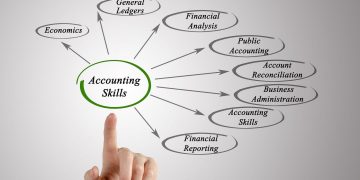How to Optimize Your Meta Descriptions for Better Click-Through Rates
In the world of SEO, meta descriptions play a crucial role in driving traffic to your website. A well-crafted meta description can significantly improve your click-through rates (CTR), enticing users to click on your link instead of competing pages. This article will explore effective strategies for optimizing your meta descriptions to enhance visibility and engagement.
What is a Meta Description?
A meta description is an HTML attribute that provides a brief summary of a web page’s content. Search engines display this snippet in search results, usually below the title tag. Although meta descriptions do not directly impact search rankings, they are vital for attracting clicks and informing users about the page’s content.
The Importance of Meta Descriptions for SEO
Meta descriptions serve as a marketing tool for your web pages. They provide users with a glimpse of what to expect when they click on your link, influencing their decision-making process. A compelling meta description can lead to higher CTRs, which can indirectly boost your search engine rankings due to increased engagement and reduced bounce rates.
How to Optimize Your Meta Descriptions1. Keep It Concise
Search engines typically display the first 150-160 characters of a meta description. To ensure that your message is not cut off, aim to keep your descriptions within this character limit. This practice guarantees that users see the entire description in search results, making it more likely they will click through to your site.
2. Include Relevant Keywords
Incorporating relevant keywords in your meta descriptions can help signal to both users and search engines what your page is about. When users see their search terms highlighted in the description, it reinforces the relevance of your content. However, avoid keyword stuffing; the description should read naturally and provide genuine value.
3. Make It Compelling
Your meta description should entice users to click on your link. Use action-oriented language and compelling calls to action (CTAs) to encourage clicks. Phrases like “Learn more,” “Discover how,” or “Get started today” can prompt users to take action.
4. Provide a Clear Summary
Ensure that your meta description accurately reflects the content of your page. Users should have a clear understanding of what they will find upon clicking. Misleading descriptions can lead to high bounce rates, which may negatively impact your rankings. Aim for a balance between being intriguing and informative.
5. Use Unique Descriptions for Each Page
Avoid using the same meta description across multiple pages. Each page should have a unique description that reflects its specific content. This practice not only improves SEO but also helps prevent search engines from considering your site as duplicate content, which can harm your rankings.
6. Leverage Structured Data
Implementing structured data can enhance your meta descriptions by allowing rich snippets to appear in search results. Rich snippets provide additional information, such as ratings, prices, or availability, making your listing more appealing. While structured data doesn’t directly affect your meta description, it can improve the overall visibility of your page.
7. Test and Refine Your Meta Descriptions
Regularly analyze the performance of your meta descriptions using tools like Google Search Console. Monitor CTRs and adjust your descriptions based on the data. If certain pages have low CTRs, consider revising the meta description to make it more engaging or relevant to users’ queries.
8. Consider Mobile Users
With the increasing use of mobile devices for searches, ensure your meta descriptions are optimized for mobile users. While the character limit remains the same, mobile users often appreciate concise and straightforward information. Focus on delivering the core message quickly and effectively.
Optimizing your meta descriptions is a vital component of any effective SEO optimization strategy. By keeping them concise, including relevant keywords, and making them compelling, you can significantly improve your click-through rates. Remember that each page should have a unique and informative description that accurately reflects the content. Regularly testing and refining your meta descriptions based on performance data will help you achieve better engagement and drive more traffic to your site. Start optimizing your meta descriptions today to enhance your overall SEO optimization efforts and attract more visitors! You can see the traffic data of your online store for dog’s accessories. It is important.













